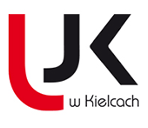Welcome to our project website!
In 1972 Fujishima and Honda published the first significant breakthrough converting light into chemical ebergy. They reported the electrochemical photolysis of water assisted by a semiconductor under UV-A radiation [1]. However as of today, despite all the scientific advances it remains a significant challenge to construct a device capable of producing solar fuels, such as hydrogen, at a scale and cost-effective capable of competing with fossil fuels. The US Department of Energy declared that the price of hydrogen must be below $3.3kg-1(including production, delivery and dispensing) in order to compete with gasoline for passenger vehicles. Most developments are based on large band gap semiconductors (> 3 eV), such as TiO2. The TiO2 compound is the most commonly used photo-catalyst for the conversion of solar radiation into chemical bonds. While being very effective catalytic material, TiO2 is doped with 3d or light elements like N, C or S able to shift conduction or valence band edges and consequently lower the band gap energy. While the doping of TiO2 provides increased visible light absorption, in many cases, this counteracts with the reduction or in extreme cases destruction of materials catalytic performance.
The project aims at studying TiO2 surface/bulk electronic structure modified by carbon, nitrogen and sulfur doping. We will employ a methodology developed by us that combine resonant X-ray emission spectroscopy and theoretical approaches to determine lowest occupied and highest unoccupied Ti electronic states. Application of X-ray for this project is crucial in order to probe the electronic structure of Ti-site in a real catalytic environment, i.e., under reducing or oxidative atmospheres and at different operating temperatures. The in-situ X-ray spectroscopy will be used do disentangle the effects to understand why the doping-induced effect of increased visible light absorption, in many cases does not translate to improved material's catalytic activity. Since the chemical efficiency is determined by number of surface states available for reactions, effects of doping on the surface electronic structure have to be thus determined. Disentangling surface and bulk contributions will allow for deep insight understanding of photo-catalytic properties of doped-TiO2 and in consequence may help in future development of chemical or pharmaceutical applications.
